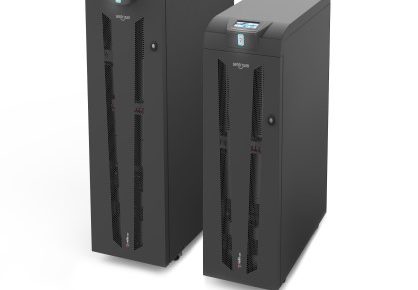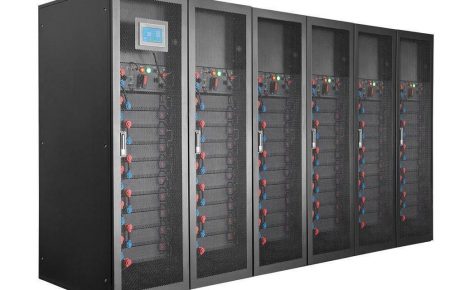An uninterruptible power supply, often known as a UPS, is an electrical device that supplies backup power to connected loads in the event of a power outage. It uses a backup battery to provide power until the main power is restored. UPSs are placed between the conventional power source and the load, with the provided power flowing through the UPS before reaching the load. When there is a power outage, the UPS detects the loss of incoming power from the main source and instantly switches outgoing power to the battery. This backup battery is usually intended to provide power for a limited time — until the power is restored. Power anomalies, such as outages, blackouts, sags, surges, brownouts, transients, and harmonics, are all undesirable power features. The availability and dependability of your important loads may be jeopardized by these power anomalies delivered by the power source.
UPSs are often used to protect important components such as data and network equipment against power outages. They’re also utilized to ensure that, in the event of a power outage, linked loads, whether critical or not, continue to operate at their best. These devices assist in avoiding costly downtime, time-consuming restart cycles, and data loss. As a result, they assist the business community in achieving optimum uptime by protecting essential loads from power quality abnormalities using a well-designed and well-implemented UPS.
Despite the fact that the term UPS is commonly used to refer to a UPS system, a UPS is only one component of a UPS system – albeit the most important one.
Expanding your UPS knowledge beyond the fundamentals might be beneficial. Getting to know your system’s core components can help you better understand how it works, allowing you to make informed decisions about how to keep it working smoothly and ensuring timely preventative maintenance activities to extend its life.
The whole system includes:
•Electronics that detect power losses and switch active output to draw from the battery •Battery (lead-acid, lithium-ion, or other) that supplies backup power
•Battery charger electronics that charge the battery
How can I select the most appropriate UPS for my application?
Consider the following eight factors during your UPS selection process to ensure that you always get the proper UPS for your needs:
UPS Topology
There are two types of uninterruptible power supplies on the market today: line-interactive and double conversion. These two types of typologies work in distinct ways, and choosing the wrong one can have an impact on the critical load. A line-interactive UPS is usually sufficient for staff computing or applications where output isolation is not necessary.
A double-conversion UPS is recommended for most sites since it has a superior output waveform throughout all operational modes and better isolation. This is also known as computer-grade power.
How Does A UPS System Work?
A UPS differs from traditional standby power systems like a generator in that it uses energy stored in batteries, supercapacitors, or flywheels to keep the load powered up when the mains supply is disrupted.
An uninterruptible power supply’s primary purpose is to provide short-term emergency power in the case of a complete power outage or blackout. Integrating Uninterruptible Power Supplies
Furthermore, most modern online UPSs can resolve a variety of typical power issues, including:
- Short times when the voltage falls below the normal mains supply level are known as sags.
- Brownouts are a type of undervoltage that occurs over a longer length of time than a sag.
- A abrupt increase in voltage generated by an event such as a lightning strike is known as a power surge.
- Harmonics are a deformation of a sinusoidal waveform’s ideal shape.
- When the power oscillates at a frequency other than 50 Hertz, it is said to be unstable (sometimes referred to as electrical noise)
- Spikes are energy spikes on the power line that last only a few milliseconds.
Learn more about how a UPS works and the three basic types of uninterruptible power supplies by watching our helpful ‘UPS Basics’ video: Online (Voltage and Frequency Independent – VFI) Offline (Voltage and Frequency-Dependent – VFD), Line-Interactive, and Double-Conversion
Watch our handy ‘UPS Basics’ video to learn more about how a UPS works and the three main types of uninterruptible power supplies: Offline (Voltage and Frequency Dependent – VFD), Line-Interactive, and Double-Conversion Online (Voltage and Frequency Independent – VFI)
Integrating Uninterruptible Power Supplies



